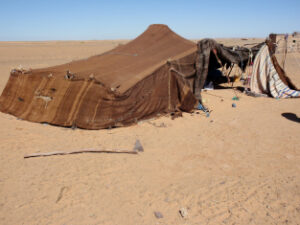
If you’re going to Peru to visit Macchu Picchu, or Cuzco, or to catch a plane to Iquitos, the center for travel in the rain forest, don’t ignore Lima, the largest city in Peru, which spreads out over several valleys, and has a population of 10 million. Before the trip we had a list of twenty places we wanted to visit in four days. After we arrived, we realized that we’d have to pare down the list.
Lima had many distinct neighborhoods: Central Lima, the historic district; Miraflores, the hotel and restaurant district; Barranco, the bohemian section, to name a few.
Here are some highlights. We stayed at the Tierra Viva Miraflores, a lovely, small hotel on Bolivar Street where the staff was extremely helpful any time we had a question. They arranged taxis, called restaurants–most within a few blocks–to see if there were openings, and were quick to do computer research on places we wanted to visit. Don’t miss eating at Punto Azul, the homey cafe with freshly made Peruvian/International food right around the corner. We felt safe walking around Miraflores day and night. One mistake we made: we did not book restaurants recommended by friends ahead of time, and when we arrived they did not have places open. If you go, check for recommended Lima restaurants–Miraflores is the restaurant area–on Trip Advisor, and book several weeks before the trip. We still had many good meals, however.
We’d been advised to book a guide to take us around the city, but at the last minute decided to wing it and take taxis–comparatively inexpensive in Peru– from our hotel to different districts. That proved to be a good decision, though a native guide may have helped us delve more into the Peruvian culture.
Huaco Pucllana is a ruin right within the city–a huge pyramid made of platforms. Huaca is the word for shrine, and Pucllana is a Quechua word for place where human sacrifices were performed, It was used by both the Wari and Lima residents from 200 A.D to 700 A.D. An ongoing excavation, it has cemeteries, and places where human sacrifices were offered to the gods. The small museum has ceramics, mummies, and textiles on display, and a restaurant with very good Peruvian dishes overlooks the site. We ate there after the tour and took photos from our table.
After touring the buildings on Plaza Mayor, the main square of the historic district, we visited the Casa Aliaga, the oldest house in Peru, and owned by the same family for over 400 years. It’s located at Jr. de la Unión 224, right off the main square, and across from the Presidential Palace (see photo of entrance to the left, and interior courtyard below). It was well worth the effort to find it: Casa Aliaga, is a beautiful example of Spanish Colonial architecture.
Don’t miss the Larco Museum of pre-Columbian art, an 18th century building erected over a 7th century pyramid. In addition to being famous for its erotic pottery, it has a large section of gold and silver jewelry. Reproductions are sold in the elegant museum shop. Plan to eat at the excellent outdoor restaurant.
from → Archeology, Architecture, Art, Food, Peru Lima

